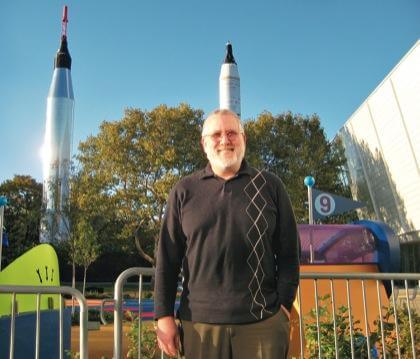By Jeremy Walsh
What does a quirky songwriting duo raised in Massachusetts and tested in Brooklyn have to do with Queens? The answer, strange as it may seem, is science.
In recent years They Might Be Giants, the rock group famous for hits like “Istanbul (Not Constantinople),” has recorded a series of children’s albums celebrating the virtues of math and the alphabet. Their latest, “Here Comes Science,” was released last month with the assistance of the New York Hall of Science’s director, Eric Siegel.
“Usually science songs are like super dorky,” Siegel, a songwriter himself, said. “They’re usually generally terribly bad. I wouldn’t recommend science songs in general, but theirs really are [distinct].”
Now the band is coming to the Hall of Science Dec. 13 to perform a pair of fund-raising shows. Tickets went on sale Monday.
“It was a very nice thing for them to do,” Siegel said. “I think they’re actually good guys.”
The album’s 19 tracks and corresponding music videos explore subjects like paleontology, the spectrum of visible light, evolution, and, most notably, the composition of the sun.
“Fourteenth album, first time fact-checked. It’s technically against the rules,” joked They Might Be Giants’ John Flansburgh during an appearance on National Public Radio. “It was very helpful, and he was very supportive.”
Siegel, who has been the head of the Hall of Science for 12 years, is no stranger to acting as an intermediary between the world of science and the layperson. In addition to having worked at museums in the city since 1983, he also teaches at New York University.
“They were good about it,” Siegel said of the band. “They completely overstated their lack of knowledge about science. They were completely receptive to my ideas, but they were also clear in saying, ‘That’s too much. We can’t represent that much with this form.’”
Over the course of about a year, Siegel reviewed the lyrics of the band’s songs and then listened to rough audio tracks. Among other things, his input helped inspire the band to rewrite a 1950s-era song about the sun they had performed live for many years.
Both “Why Does the Sun Shine” and “Why Does the Sun Really Shine,” which corrects the composition of the sun from gas to plasma, are included on the album.
Siegel said he was proudest of convincing the band to use a contemporary depiction of an atom as a cloud of potential electron locations for its music videos.
But working with a band had its own learning curve, Siegel said, noting he was not initially aware They Might Be Giants had previously released the children’s records “Here Comes the 123s” and “Here Comes the ABCs.”
“They’re so funny that you just want to be funny, too,” he said. “I’m not that funny. So I said, ‘Why don’t you just call the record “They Might Be Science”?’ Then, dead silence, so I thought, ‘I won’t put my oar in again.’”
Naming issues aside, Siegel had high praise for the band’s interest in immersing kids in learning.
“They have an opening statement: ‘Science is real,’” he said. “Not everybody even believes that, so they really kind of put their marker down.”
Reach reporter Jeremy Walsh by e-mail at jewalsh@cnglocal.com or by phone at 718-229-0300, Ext. 154.



































